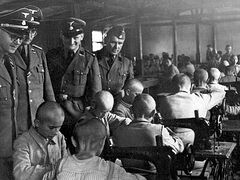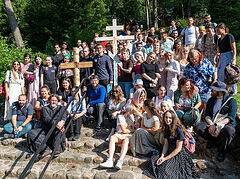Warsaw, July 9, 2024
On July 5, the Polish Autocephalous Orthodox Church celebrated the annual Feast of "Piatieńki” on the Holy Grabarka Mountain. This year, the Polish Church is also celebrating the centenary of its autocephaly, reports the website of the Polish Autocephalous Orthodox Church.
In the liturgical tradition of the Polish Autocephalous Orthodox Church there are many local traditions that are not found in other local Orthodox Churches. One example is the Feast of Piatieńki, which is the Feast of the Compassion of the Mother of God at the Lord’s Passion on the Cross. In folk tradition, this feast is referred to as the Tenth Friday, and it is from “diesiatoj piatnicy” that the most popular name for this feast, Piatieńka derives. This Marian feast was once called the Feast of Our Lady of Sorrows, during which the role of the Mother of God in the process of human salvation and her pain and suffering during her Son's Passion were commemorated.
This feast is particularly celebrated on the Holy Mountain of Grabarka, a place of special significance for Orthodoxy in Poland. The Holy Mountain of Grabarka has become the heart of the Polish Autocephalous Orthodox Church, uniting believers from all over Poland. This year, the Feast of Piatieńki was celebrated on July 5. On the eve of the feast, an all-night vigil was held, during which hymns dedicated to the Mother of God could be heard. At 9:00 PM, the clergy read the Akathist to the Theotokos, and on the day of the feast, after the blessing of the water, the Holy Liturgy was celebrated, led by the abbot of the Jableczna Monastery, Archimandrite Piotr (Dawidziuk). In his address, the Archimandrite emphasized the role of the Mother of God in the process of human salvation and the presence of Marian themes in Orthodox piety. Referring to the words of one Marian hymn, “Stradalnaja Maty pid krestom stojała…", he also pointed out that in the experience of the Theotokos, every person can find understanding for their own, sometimes difficult and painful experiences.
“This feast has been preserved in the liturgical practice of our Church in only a few places in Poland, but it testifies to the fact that we have our own local traditions and customs resulting from a difficult history. It also shows that we have created a liturgical tradition on our lands that is unique to us. It is precisely because of this beautiful and distinct Orthodox tradition that we deserved, one hundred years ago, to have it recognized in the form of granting autocephaly, independence, to the people of these lands and our local Orthodox tradition, thus showing appreciation for the efforts of our ancestors in preserving and nurturing the Orthodox faith in these areas,” says the website of the Polish Autocephalous Orthodox Church.
“With the beloved disciple, the Virgin Mother, standing by the Cross and unable to look upon her Son hanging on the Cross, cried out with one voice: How do You suffer, You who by nature cannot experience suffering? I praise Your ineffable goodness, my Son, which surpasses all understanding!” (Troparion, Tone 6)






